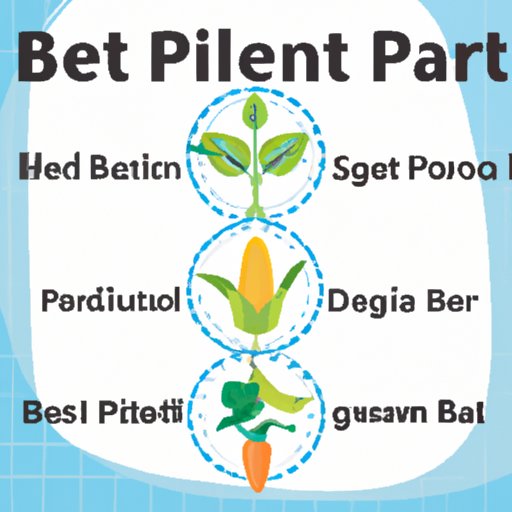Introduction
A plant based diet is one that consists primarily or entirely of foods derived from plants, including vegetables, fruits, legumes, nuts, seeds, and whole grains. It excludes all animal products, such as meat, dairy, eggs, and fish. Though there are many variations of a plant based diet, the most common forms are vegan and vegetarian. Vegan diets exclude all animal products, while vegetarian diets may include dairy, eggs, and sometimes fish.
There are numerous benefits to transitioning to a plant based diet, both for your health and for the environment. A plant based diet can provide essential vitamins and minerals, and may reduce the risk of certain diseases. Additionally, it can help protect the environment by reducing greenhouse gas emissions and water usage associated with animal agriculture.
Understand the Benefits
There are many health benefits to following a plant based diet. Studies have found that those who consume more plant-based foods tend to have lower rates of obesity and heart disease. Additionally, a plant based diet can provide essential vitamins, minerals, and antioxidants that can help boost your immune system.
Eating a plant based diet can also benefit the environment. Animal agriculture is responsible for a large portion of global greenhouse gas emissions, as well as water and land usage. By eating less animal products and more plant-based foods, you can reduce your carbon footprint and help protect the planet.
Start Small
The best way to transition to a plant based diet is to start small and make gradual changes. Begin by incorporating more plant-based ingredients into your meals. Try adding more vegetables, nuts, seeds, and legumes to dishes you already enjoy. As you become more comfortable, you can increase the proportion of plant-based foods in your meals.
It’s also important to find recipes that are easy and enjoyable to make. Look for recipes that feature a variety of plant-based ingredients and flavors. This will help keep you motivated and excited about trying new dishes. You can also try experimenting with different cooking methods, such as baking, grilling, steaming, and stir-frying.
Meal Plan
Creating a meal plan is a great way to ensure you’re getting enough variety in your diet. Start by making a list of your favorite plant-based ingredients and recipes. Then, plan out your meals for the week, making sure to include a variety of plant-based ingredients. Incorporate both cooked and raw foods, as well as a mix of proteins, carbohydrates, and healthy fats.
It’s also important to stay motivated when transitioning to a plant based diet. Make sure to reward yourself for sticking to your plan and trying new recipes. You can also connect with other plant-based eaters online or in your community for support and inspiration.
Stock Up
Once you’ve created a meal plan, it’s time to stock up on the necessary ingredients. Start with pantry staples such as quinoa, brown rice, oats, and other whole grains. Legumes, such as lentils and beans, are an excellent source of protein and fiber. Nuts, seeds, and dried fruits are also great additions to any meal.
When shopping for fresh produce, try to buy organic and locally grown whenever possible. Choose a variety of colors and types of fruits and vegetables to ensure you’re getting a wide range of nutrients. Additionally, look for plant-based proteins such as tempeh, tofu, and seitan.
Dine Out
Eating out can be challenging when following a plant based diet, but there are still plenty of options available. Look for restaurants that offer plant-based dishes, such as veggie burgers, salads, and wraps. If you’re at a restaurant that doesn’t offer plant-based items, you can often create your own vegan dish by substituting animal products for plant-based ingredients.
You can also learn to cook vegan dishes at home. Look for vegan cookbooks or search online for recipes. With a little practice, you’ll soon be whipping up delicious vegan dishes in no time.
Conclusion
Transitioning to a plant based diet can provide numerous health and environmental benefits. To get started, understand the benefits and start small, gradually incorporating more plant-based foods into your meals. Create a meal plan and stock up on the necessary ingredients, and don’t forget to look for vegan options when dining out.
Following a plant based diet can be difficult at first, but with a little practice and determination, you’ll soon be reaping the rewards. With a variety of delicious plant-based ingredients and recipes, you can create nutritious and satisfying meals that are good for both your body and the planet.
(Note: Is this article not meeting your expectations? Do you have knowledge or insights to share? Unlock new opportunities and expand your reach by joining our authors team. Click Registration to join us and share your expertise with our readers.)
